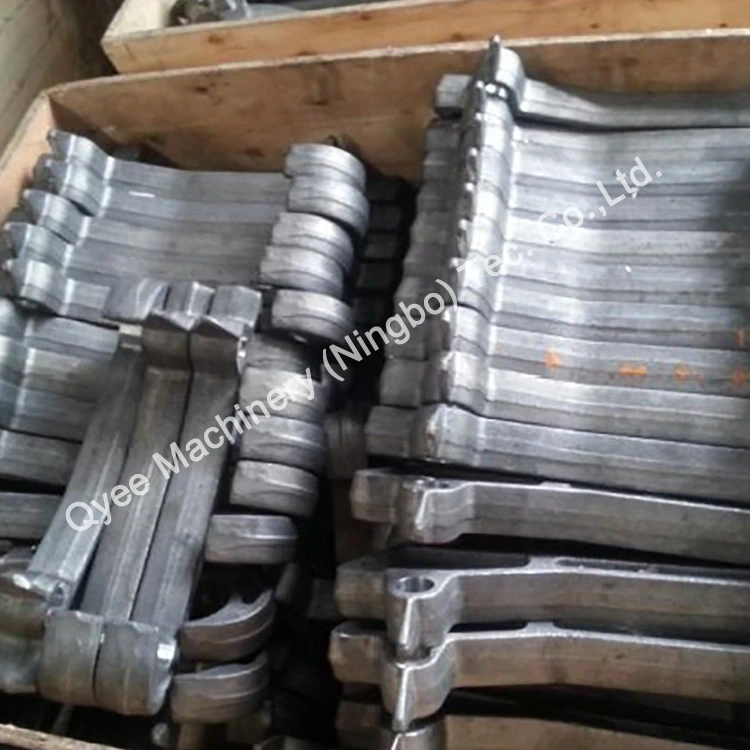Why Is a Forging Straight Hook Becoming the Preferred Solution for Heavy-Duty Lifting and Rigging?
2025-11-25
A Forging Straight Hook is a high-strength lifting component manufactured through a thermal forging process that compresses, shapes, and refines steel to achieve exceptional mechanical performance. It is widely used in cranes, hoists, rigging assemblies, mining operations, marine lifting, railway construction, and industrial material handling. The relevance of this product continues to increase as industries demand safer load-bearing solutions, higher fatigue resistance, and longer service lifespans.
What Are the Critical Specifications of a Forging Straight Hook?
Performance of a Forging Straight Hook is determined by metallurgy, dimensional precision, and load-bearing verification. Below is a representative technical overview used in industrial procurement and engineering selection.
Key Product Parameters
| Parameter Category | Typical Specification Range | Purpose |
|---|---|---|
| Material | Alloy steel (e.g., 20Cr, 35CrMo, 42CrMo), Carbon steel, Low-alloy quenched & tempered steel | Ensures tensile strength, toughness, fatigue resistance |
| Manufacturing Process | Drop forging / closed-die forging / heat treatment (quenching + tempering) | Creates dense grain flow and improves structural integrity |
| Surface Finish | Shot blasting, anti-corrosion coating, galvanized, painted | Prevents rust and extends service life |
| Load Capacity (Working Load Limit) | 0.5 ton – 50 ton (custom up to 200 ton) | Determines safe lifting performance |
| Safety Factor | 4:1, 5:1 or higher depending on application | Offers overload protection |
| Hook Opening Width | Customizable according to sling or chain size | Ensures compatibility |
| Hardness Value | HRC 32–40 (depending on steel grade) | Maintains strength while resisting deformation |
| Temperature Resistance | −20°C to 200°C depending on material | Important for marine, offshore, and industrial use |
| Standards Compliance | EN 1677, ASME B30.10, DIN standards, ISO standards | Meets global safety regulations |
These parameters guarantee that each forging hook delivers uniform strength, stable performance, and reliable durability in demanding lifting environments.
Why Is the Forging Straight Hook Essential for Modern Heavy-Duty Applications?
Why Forging Provides Superior Mechanical Properties
Forging restructures metal under high temperature and pressure, producing a continuous grain flow aligned with the hook’s contours. This results in:
-
Higher tensile strength and yield strength
-
Exceptional fatigue resistance under cyclic loads
-
Greater resistance to cracking and impact
-
Lower internal porosity compared to casting
-
Improved stability under dynamic load conditions
Industries rely on forged components because lifting operations demand absolute reliability. A Forging Straight Hook manufactured through precision forging minimizes the risk of catastrophic failure.
Why the Straight Hook Design Is Advantageous
The straight hook format supports balanced load distribution and is suited for:
-
Vertical lifting operations
-
Hoisting systems with minimal side loading
-
Applications requiring quick coupling and decoupling
-
Chain sling and wire rope assemblies
-
Cranes, winches, and marine lifting gear
Straight hooks also provide easier inspection and reduced wear because contact points are clear and evenly aligned.
Why Industries Prefer Forging Straight Hooks Over Cast Hooks
| Feature | Forged Hook | Cast Hook |
|---|---|---|
| Structural Strength | Excellent | Moderate |
| Toughness | High | Lower, brittle under shock |
| Internal Defects | Very low | Higher chance of voids |
| Fatigue Life | Long | Shorter |
| Load Safety | More stable | Less reliable |
Forged hooks remain the trusted choice for industrial environments where safety and operational continuity are crucial.
How Are Forging Straight Hooks Manufactured for Maximum Safety and Durability?
How Forging Enhances Grain Structure
Heating steel to forging temperature and compressing it under thousands of tons of force achieves:
-
A homogeneous, refined grain structure
-
Alignment of metal flow to follow hook geometry
-
Elimination of weak points along load paths
This ensures that the hook retains consistent performance even after long-term heavy use.
How Heat Treatment Strengthens the Hook
The sequence typically includes:
-
Quenching – Rapid cooling to increase hardness.
-
Tempering – Reheating to balance strength and toughness.
-
Normalization – Optional process improving machinability and stress distribution.
Through these stages, the hook achieves optimal mechanical balance: strong but not brittle, tough but not soft.
How Safety Factors and Proof Testing Are Applied
To ensure safety in real applications, hooks undergo:
-
Load proof testing at 1.5× working load
-
Fatigue testing for cyclic endurance
-
Non-destructive inspection (magnetic particle, ultrasound)
-
Dimensional checks for hook opening, throat dimension, and curvature
A high safety factor ensures accident prevention in unpredictable lifting conditions.
How Different Industries Apply Forging Straight Hooks
-
Construction & infrastructure – Tower cranes, beam lifting, concrete modules
-
Marine engineering – Offshore operations, shipyard lifting
-
Mining & metallurgy – Ore handling, machinery maintenance
-
Railway construction – Track installation, mechanical lifting
-
Energy sector – Wind turbine component lifting, power plant rigging
-
Logistics & warehousing – Material transportation and heavy cargo movement
The versatility of these hooks makes them a universal solution across sectors.
Common Questions About Forging Straight Hooks
Q1: How to choose the correct load capacity for a Forging Straight Hook?
A: Selection should be based on the maximum weight of the load, the sling configuration, and safety regulations. The Working Load Limit (WLL) must exceed the heaviest expected load, and applications with dynamic forces—such as crane operations—require a higher safety factor. International standards like ASME or EN provide guidelines to ensure safe selection.
Q2: How often should a Forging Straight Hook be inspected?
A: Frequent inspection is essential. Daily visual checks should confirm there are no cracks, deformation, corrosion, excessive wear, or changes in throat opening. A more comprehensive inspection, including non-destructive testing, should be performed periodically depending on operation frequency, load severity, and regulatory requirements. Always remove a hook from service if deformation exceeds permissible limits.
Future Trends — What Will Shape the Next Generation of Forging Straight Hooks?
Advancement in High-Performance Alloy Steel
Future products will incorporate steels with enhanced microstructure, allowing:
-
Higher load capacity without increasing size
-
Better fatigue resistance under continuous use
-
Greater resistance to corrosion and extreme temperatures
Improved Precision Forging Technologies
Innovations include:
-
Closed-die near-net-shape forging
-
Automated press forging
-
Digital monitoring of forging temperature and pressure
These advancements will enhance accuracy, reduce material waste, and ensure consistent quality at scale.
Smart Identification and Digital Tracking
Industrial lifting sectors increasingly adopt digital safety systems:
-
RFID tagging for inspection records
-
Digital certificates and load history tracking
-
AI-assisted fatigue prediction (industry trend, not interactive AI)
These systems ensure traceability and compliance with modern safety standards.
Enhanced Surface Treatments
Technologies such as nano-coatings, advanced galvanizing, and polymer-based protective layers will extend service life in marine, mining, and corrosive environments.
Conclusion — Why the Forging Straight Hook Remains a Core Component in Industrial Lifting
A Forging Straight Hook is more than a simple lifting accessory. It represents structural engineering precision, metallurgical science, and safety-critical performance. Strength, reliability, and resistance to wear make it a standard solution across construction, mining, marine, and manufacturing operations. As global industries continue demanding safer and more durable lifting equipment, forged hooks maintain their essential role due to superior mechanical properties, stable load-bearing capacity, and long-term economic value.
For companies seeking reliable forged lifting components, Qyee offers advanced manufacturing capabilities, strict quality control, and customizable specifications to meet diverse industrial needs. For inquiries, technical consultation, or bulk procurement requirements, contact us for further assistance.



